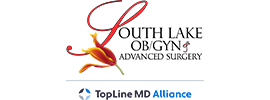Skin Rejuvenation Therapy
Skin rejuvenation is often turned to as a means to reverse the damaging effects of ultraviolet light on the skin, which can cause wrinkles, texture abnormalities, actinic keratoses, and pigment dyschromias.
There are several methodologies used to assess a patient for therapy, but the use of the Glogau photoaging scale in conjunction with the Fitzpatrick skin classification system have been shown by a study at the NIH to be the most useful. There are three types of Skin rejuvenation that are commonly sought today:
- photo rejuvenation
- chemical rejuvenation
- thermal rejuvenation
Though these three methods encompass a number of therapies, they all fall into the above three categories. Photo rejuvenation is a process that uses light emitting diodes, intense pulsed lights, and lasers. Also known as PTD, it has been shown to produce a decrease in elastotic material in the skin and an increase in collagen. Because of the limited and well understood side effects of PTD, the process is favored over other processes. Chemical rejuvenation is a topical process where peels and chemical preparations are used to bring out a more youthful looking skin by removing dead, damaged skin, and stimulating new cell division. Thermal rejuvenation is the process where heat applications are made with a radio frequency device to heat the skin and in doing so rejuvenating it.
The effects of many modern skin rejuvenation methods have been shown to have some very favorable results. The treatments tends to be minimally invasive, and with little if any pain or hassle. No matter which treatments are right for any given patient, having a trained and experienced professional carry out the procedures is important.

